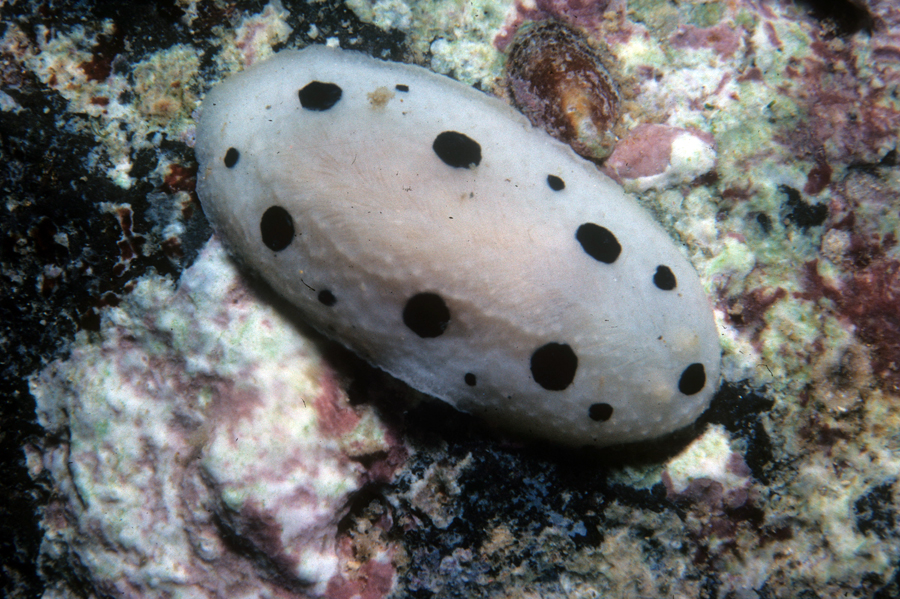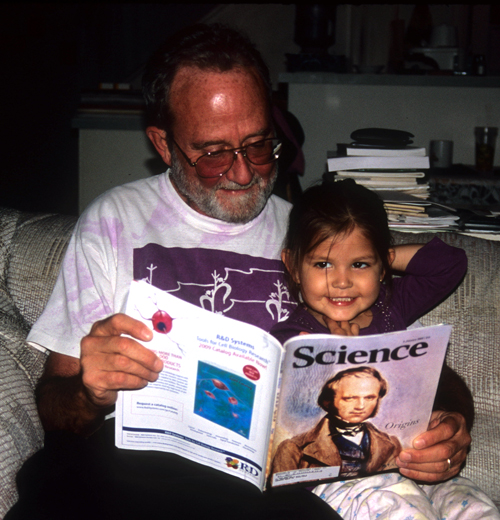 |
Phyllidia scottjohnsoni
Photo by Scott Johnson
Maui, 22 mm alive, July 1978
Phyllidia scottjohnsoni Brunckhorst, 1993
This marvelous little phyllidiid (14–26 mm total length) is quite distinguishable with its white body color and big black dots . “Many tiny, irregular tubercles are scattered on the dorsum....The short, cream coloured rhinophores bear seven to nine broad lamellae on the clavus....Ventrally, the hyponotum (except beneath the black spots), gills, foot and pointed oral tentacles are white to cream in colour” (Brunckhorst, 1993: 43).
Gosliner, Behrens & Valdés (2008) report this species from the extremes of the central and west Pacific (Hawai'i, Japan and Darwin, NT, Australia). It is usually considered rare or uncommon. Internet sites provide several records and photographs of various living animals. In a message on Bill Rudman's Sea Slug Forum , Keoki Stender wrote they are common at Midway Atoll, but “I've never seen them here in the main [Hawai'ian] Islands.” In contrast, in their Sea Slugs of Hawaii site ,
Cory Pittman and Pauline Fiene say it is rare at Midway (“seen only once”), and state that the “population may be variable.” Bob Bolland's Okinawan slug site notes it is uncommon, with only one record (by Atsushi One), from Zamami Island, Kermama Islands, Okinawa.
In the southeast main Hawai'ian Islands, it is known from Maui (Scott's opening photo to this BOW) and O'ahu (North Shore records, Haleiwa and Pupukea). Neither Bertsch & Johnson (1981) nor Hoover (1998) illustrated this species. As Gosliner, Behrens & Valdés (2008: 288) wrote, “Little is known about the natural history of this species.”
It is, of course, named for our good friend and colleague, Scott Johnson , still diving on Kwajelein!
Literature Cited
Bertsch, Hans & Scott Johnson. 1981. Hawaiian Nudibranchs. A guide for scuba divers, snorkelers, tidepoolers, and aquarists. Oriental Publishing Co., Honolulu. 112 pp.
Brunckhorst, David J. 1993. The systematics and phylogeny of phyllidiid nudibranchs (Doridoidea). Records of the Australian Museum, Supplement 16: 1-107.
Gosliner, Terrence M., David W. Behrens & Ángel Valdés. 2008. Indo-Pacific Nudibranchs and Sea Slugs. A field guide to the World's most diverse fauna. Sea Challengers Natural History Books, Etc., Gig Harbor, WA, and California Academy of Sciences, San Francisco. 426 pp.
Hoover, John P. 1998. Hawai'i's Sea Creatures. A guide to Hawai'i's marine invertebrates. Mutual Publishing, Honolulu. xviii + 366 pp.
Hans Bertsch
Universidad Autónoma de Baja California Sur, La Paz,
and Imperial Beach
*

|
